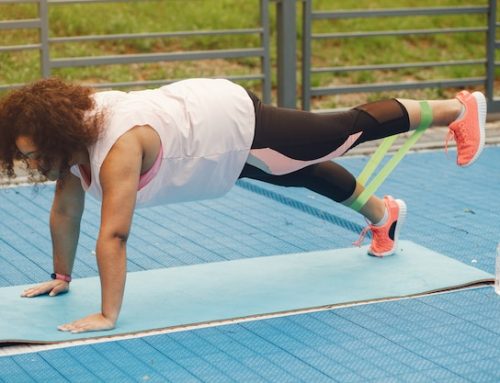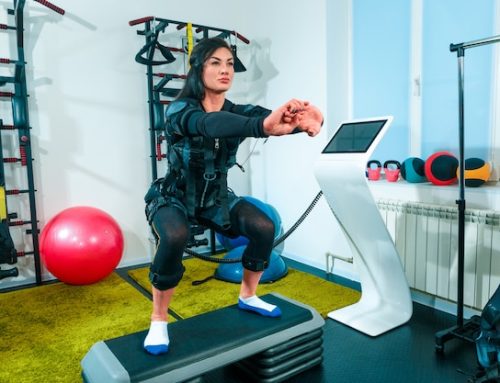Introduction
Fitness trends come and go, but one that has stood the test of time is high-intensity interval training (HIIT). This type of workout alternates between periods of intense exercise and rest, providing a challenging and effective way to burn calories and improve fitness. Many people wonder whether HIIT or traditional cardio burns more calories and fat. In this blog post, we’ll explore the science behind these two types of exercise and help you decide which one is right for you.
What is HIIT?
HIIT, or high-intensity interval training, is a form of interval training that typically combines short bursts of intense exercise with short rest phases, or lower-intensity exercise. For example, a HIIT exercise called Tabata involves 20 seconds of maximal effort followed by 10 seconds of rest. One Tabata cycle therefore lasts only four minutes.
HIIT training usually combines two types of exercise – anaerobic and resistance. During explosive interval training, the heart rate should be about 80% above average for one to five minutes. During the rest phase, the heart rate should drop to 20%. Meters in the form of fitness watches will help you determine your heart rate during your workout.
What is cardio?
Cardio is an abbreviation for Cardiovascular Exercise. It is a form of low- or high-intensity exercise, depending on the type of exercise. Since the body needs sufficient oxygen to perform this exercise, it is considered aerobic exercise. HIIT, on the other hand, is anaerobic exercise. During traditional cardio exercise, the heart rate should be kept around 60 to 80 per cent above the resting level.
When it comes to cardio, most people think of the word running, but there are various options such as cycling, skiing, swimming and even lower intensity exercises such as kayaking.
What is the difference between aerobic and anaerobic exercise?
- Aerobic exercise – is intense exercise that promotes the circulation of oxygen in the blood and is associated with increased breathing rate. Examples include running, swimming or cycling.
- Anaerobic exercise – literally means ‘no air’ or ‘without oxygen’. It involves short, intense exercise, such as sprinting, in which oxygen consumption exceeds the oxygen supply. The body is then fuelled by energy stored in the muscles in a process called glycolysis.
HIIT vs. Cardio: What’s the Difference?
To understand which type of exercise burns more calories and fat, we first need to define what HIIT and cardio are. Cardio, short for cardiovascular exercise, typically involves steady-state activity at a moderate intensity, such as running or cycling at a constant pace for an extended period of time. HIIT, on the other hand, involves short bursts of high-intensity exercise, followed by periods of rest or lower-intensity activity. An example of HIIT would be performing 30 seconds of all-out sprinting, followed by 60 seconds of walking or jogging, repeated for several rounds.
Calorie Burn
When it comes to calorie burn, HIIT has the edge over cardio. A study published in the Journal of Obesity found that HIIT burned up to 25-30% more calories than steady-state cardio. This is because the high-intensity intervals of HIIT result in a phenomenon known as excess post-exercise oxygen consumption (EPOC), or the afterburn effect. Essentially, your body continues to burn calories at an elevated rate even after you’ve finished your workout, helping you to continue to burn fat long after you’ve left the gym.
Fat Burn
While HIIT may burn more overall calories than cardio, it’s not necessarily the best type of exercise for burning fat. A study published in the International Journal of Obesity found that steady-state cardio resulted in a greater reduction in body fat than HIIT. This is likely due to the fact that steady-state cardio is performed at a lower intensity, which allows the body to burn fat for fuel more efficiently. HIIT, on the other hand, puts the body under such intense stress that it relies more on stored glycogen for energy, rather than fat.
Time Commitment
One of the major benefits of HIIT is that it can provide a highly effective workout in a short amount of time. Research has shown that just 20-30 minutes of HIIT can provide the same or greater cardiovascular benefits as 60 minutes of steady-state cardio. This makes HIIT a great option for those with busy schedules who are looking to maximize their workout efficiency.
Effort Level
There’s no denying that HIIT is a challenging workout. The high-intensity intervals can be tough to get through, and the extra effort can leave you feeling drained afterward. However, the short intervals of rest or lower-intensity activity provide some relief, making the workout more manageable overall. Steady-state cardio, on the other hand, is generally performed at a lower intensity, making it a more sustainable option for those who may not enjoy or be able to handle the intense demands of HIIT.
Personal Preference
At the end of the day, the best type of exercise for burning calories and fat is the one that you enjoy and can stick to long-term. If you love the challenge of HIIT and can incorporate it into your routine consistently, you’re likely to see great results. Similarly, if you prefer the steady pace and sense of accomplishment that comes with a long run or bike ride, steady-state cardio may be the way to go. Experiment with both types of exercise and find the one that feels best for you.
Conclusion
Ultimately, the question of whether HIIT or cardio burns more calories and fat depends on a variety of factors, including the intensity level, duration, and personal preferences of the individual. Both types of exercise have their own unique benefits and drawbacks, and the best way to determine which one is right for you is to try them both and see how your body responds. Regardless of which type of exercise you ultimately choose, the most important thing is to make fitness a consistent part of your lifestyle, and to find a workout routine that you enjoy and can stick to long-term.






